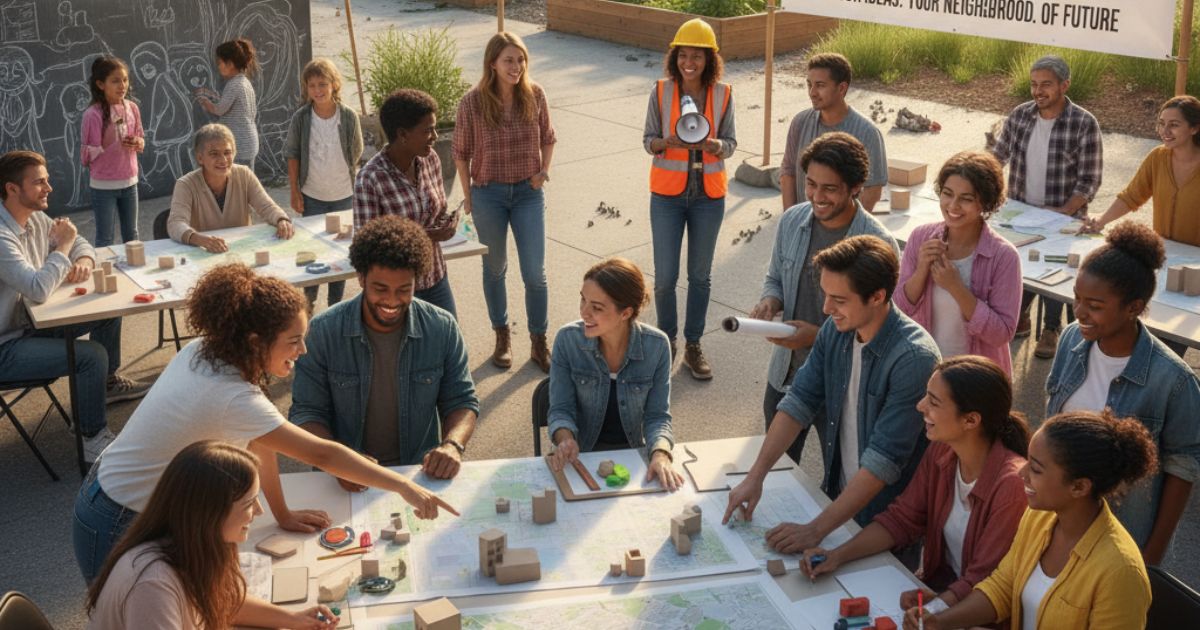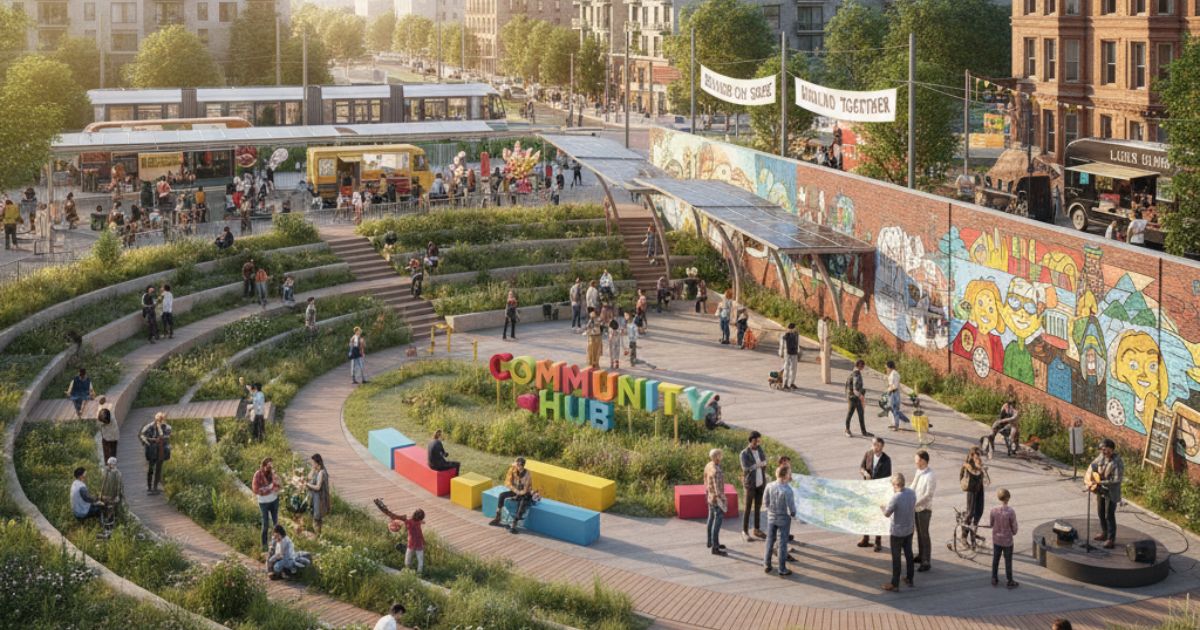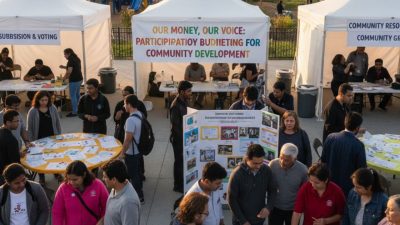As cities grow rapidly and public spaces become increasingly scarce, traditional top-down planning is no longer effective. Community-driven urban design puts residents at the center of city planning and development. It ensures that parks, plazas, streets, and green areas truly reflect the community’s needs, culture, and daily life. When people help shape their own neighborhoods, cities become more inclusive, sustainable, and livable. This collaborative process builds stronger communities, supports urban resilience, and creates public spaces that people love and care for.
Why Community-Driven Design Matters
Top-down approaches to urban development can overlook unique social dynamics, cultural heritage, and the day-to-day realities of neighborhood life. When residents participate directly:
- Local Knowledge Powers Better Decisions. Longtime residents often know hidden paths, microclimates, and cultural landmarks that formal surveys miss.
- Strong Ownership & Stewardship. People who help co-create a space often feel a sense of responsibility for its upkeep, which can reduce vandalism and maintenance costs.
- Enhanced Social Cohesion. Collaborative workshops foster connections among diverse community members, bridging generational, cultural, and socioeconomic divides.
- Inclusive Accessibility. Engaging users with disabilities, families with strollers, seniors, and youth ensures that the design accommodates the needs of everyone.
Proven Participatory Techniques

A variety of engagement methods can guide community-driven urban design. Choose a mix to reach broad demographics:
- Visioning Workshops: Gather residents in small groups with large-format maps and colored markers. Invite them to mark features they love, problem spots, and new amenities they’d like to see.
- Mobile Pop-Up Events: Host interactive booths in plazas, markets, or near schools and colleges. Use touchscreen tablets or physical model kits so passersby can vote on design options in real time.
- Walking & Rolling Tours: Lead guided tours with planners and local advocates. Encourage participants to share anecdotes, accessibility challenges, and hidden opportunities as they move through the space.
- Digital Engagement Platforms: Leverage web portals and mobile apps for crowdsourced idea submission, map annotations, and asynchronous feedback—ideal for residents who can’t attend in person.
Technologies & Tools for Deeper Insight
Modern tools amplify the impact of participatory design by capturing quantitative and qualitative data:
- Geospatial Mapping Software (GIS): Visualize community input layers—safety concerns, shade coverage, noise hotspots—directly onto digital maps.
- 3D Modeling & VR Walkthroughs: Offer immersive previews of proposed interventions, allowing residents to “walk” through new plazas, benches, and playgrounds before construction.
- Sentiment Analysis: Analyze open-ended survey responses or social media comments to surface common themes, emerging concerns, and enthusiastic support.
- Real-Time Data Dashboards: Track participation rates, demographic representation, and feedback trends to adjust outreach strategies in real-time.
Case Study: Revitalizing Greenway Park
In the mid-sized city of Lakeford, a neglected linear park along an old rail corridor became the focal point for community-driven design. The city organised a six-month engagement series that combined pop-up workshops, a dedicated project website, and QR-coded station markers along the corridor. Over 2,000 residents submitted ideas ranging from outdoor fitness zones to pollinator gardens. Key outcomes included:
- Playful Plazas: Family-friendly gathering spots featuring game tables and shade trees chosen by local youth.
- Accessible Pathways: Smooth, gently sloped walkways recommended by wheelchair users and senior groups.
- Community Art Installations: Murals depicting local history, co-designed by neighborhood artists and schoolchildren.
Within one year of groundbreaking, park usage tripled, local businesses reported increased foot traffic, and citizen surveys showed a 90% satisfaction rate with the new space.
Overcoming Common Challenges

Even well-intentioned participatory processes can hit roadblocks. Anticipate and address these to maintain momentum:
- Engagement Fatigue: Keep sessions concise, rotate venues, and integrate fun elements like food trucks or live music to sustain interest.
- Representative Participation: Partner with local nonprofits, faith groups, and schools to reach underrepresented voices, ensuring equity in decision-making.
- Conflicting Priorities: Use transparent voting mechanisms and clarify trade-offs—e.g., more green space versus additional seating—so the community can make informed choices.
- Budget Constraints: Encourage low-cost pilot projects (pop-up parklets, temporary street closures) to test concepts before committing to large capital expenditures.
Measuring Impact & Ensuring Sustainability
After design and construction, continue tracking metrics to validate success and guide future improvements:
- Footfall Counters: Automated sensors monitor usage patterns by time of day and week.
- Resident Surveys: Periodic polls gauge perceptions of safety, beauty, and social value.
- Maintenance Logs: Track repair requests and upkeep costs to optimize design elements for longevity.
- Community Liaisons: Appoint volunteer stewards to organize clean-ups, seasonal events, and feedback sessions.
Conclusion: Designing with, Not for, Communities
Community-driven urban design transforms public spaces into vibrant areas that authentically reflect the people who use them. By using Participatory Asset Mapping, planners and local governments can identify local strengths, resources, and community needs directly from residents. This approach enables everyone to collaborate in designing parks, plazas, and streets that foster well-being, inclusion, and pride. When citizens actively shape their neighborhoods, cities become more connected, sustainable, and people-centered. It’s a simple yet powerful way to build stronger communities and create public spaces that everyone values and enjoys.





